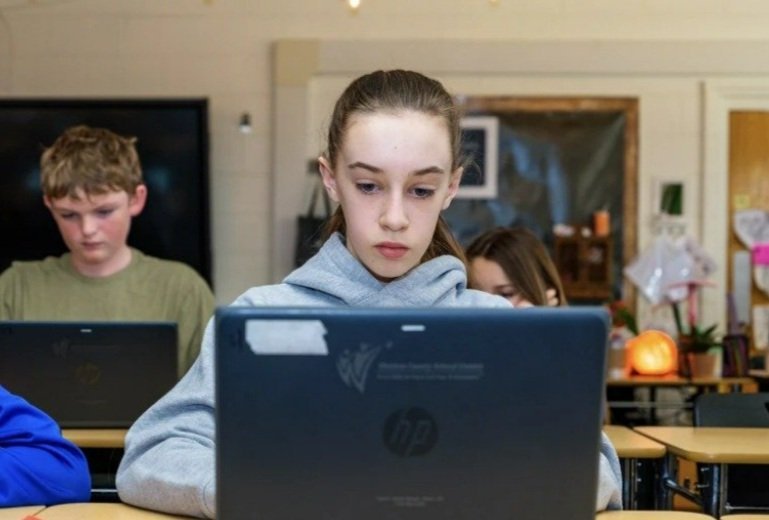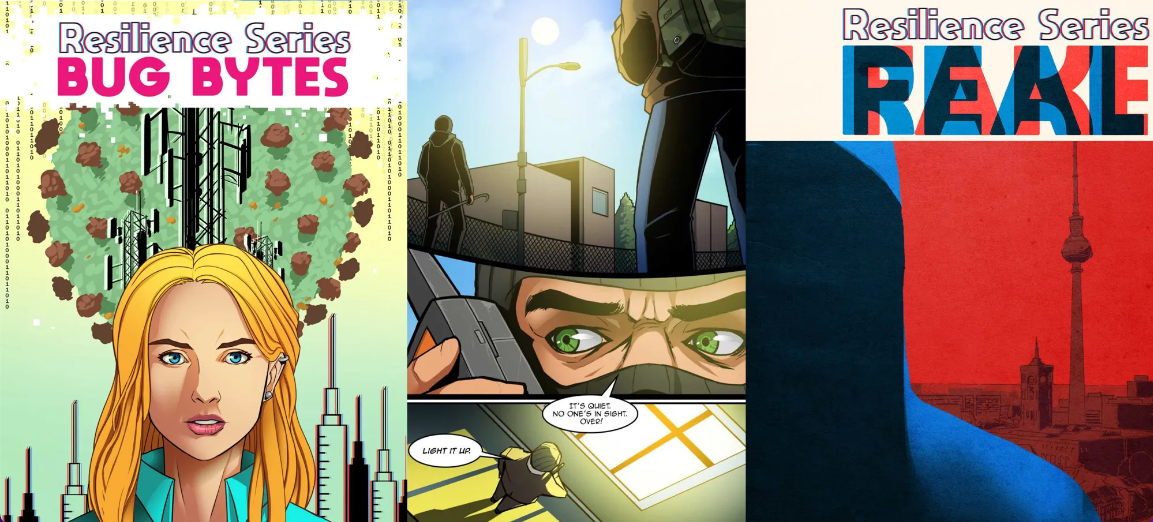Media Literacy for Students in a Digital Age
High school students sit next to each other, each on their computers, at Manor New Tech High School, in Manor, Texas. (Photo Illustration: Carnegie Corporation of New York; Photo: Getty Images)
Carnegie Corporation of New York
No facet of our lives is untouched by media. Our public spaces are infused with an unending cascade of media messages promoting an array of corporations, causes, candidates, events, and teams. Social media has reshaped our culture, even for those who never log on. And AI is making it easier than ever before for anyone to create content that feels real — even when it’s not.
This presents schools and educators with a new challenge. In this rapidly evolving digital world, literacy means more than knowing how to use digital tools. Powerful computers now fit in the palms of our hands, and the resulting access to information and audiences requires new thinking and reasoning skills, not just knowledge of how to use a device or app.
Yet media literacy education is a contested domain with divergent ideas about its purposes and best practices. While many educators have met the challenge with energy and creativity, a lack of school, district, or statewide coordination around media literacy education has left a dizzying array of practices and priorities. Some teachers dismiss media literacy education as extraneous or view it as someone else’s job. Some address media issues that are important to them, without considering the specific needs or experiences of the students they teach. The result creates unnecessary repetition for some students while others receive no media literacy instruction at all. The status quo is a recipe for reinforcing existing inequities.
RELATED STORIES FROM THE INTEGRITY PROJECT




